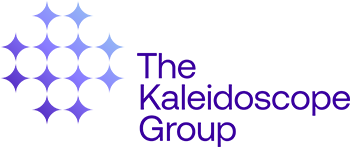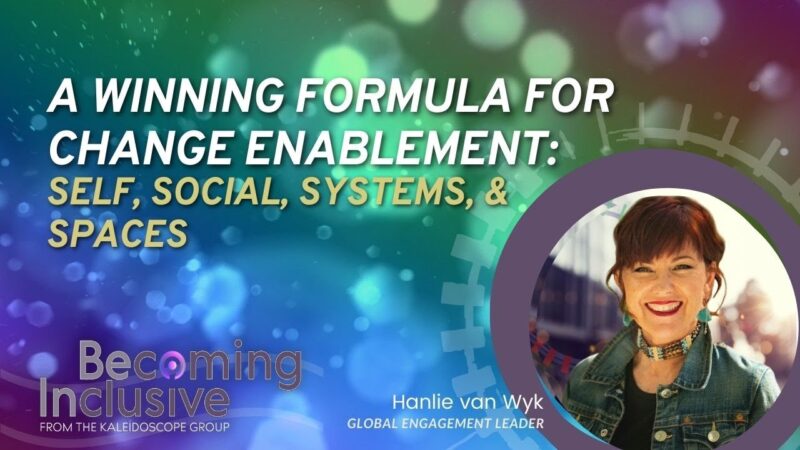Impacting Organizational Change: Making the Case to the C-Suite
June 1, 2024

Diversity can be a point of massive strength. When change management efforts get this right, the benefits are huge. Organizations are facing an unprecedented opportunity to harness the power of diversity, equity, and inclusion (DEI) to drive innovation, enhance performance and create lasting impact. And yet, many leaders find themselves at a crossroads, recognizing the need for transformation, but unsure how to effectively make the case for change and champion DEI initiatives to their C-suite colleagues.
With over 30 years of global experience, we understand the challenges of championing change within your organization. But we have also witnessed firsthand the transformative power when teams get it right. From boardrooms in New York to frontline team meetings in Tokyo, bringing people together across lines of difference strengthens teams, and empowers leaders to achieve better results. In order to effectively communicate the value of DEI to the C-suite, you must first understand what is keeping them from making the connection between this work and impactful organizational change that aligns with your mission and enhances the bottom line. A few other key insights and proof points can also strengthen your case for change.
Understanding C-Suite Resistance
At Kaleidoscope, we have encountered various forms of resistance when proposing DEI initiatives to the C-suite. These barriers, while challenging, are not insurmountable. Understanding these obstacles is crucial. The most common obstacles of the change management process include:
Fear of Change
This barrier often manifests as anxiety about disrupting established norms and processes. Executives may worry that DEI initiatives will upset the current organizational balance or require significant shifts in company culture. They might fear potential backlash from employees or concern about how these changes could impact productivity and team dynamics in the short term.
Concerns about Quotas
Many executives harbor misconceptions about DEI initiatives, equating them with rigid quota systems. This fear stems from a misunderstanding of the best DEI practices, which focus on creating equal opportunities and inclusive environments rather than enforcing strict numerical targets. The concern here is often rooted in worries about compromising merit-based systems or facing legal challenges.
Resistance to Wholesale Changes
Some leaders view DEI initiatives as requiring a complete overhaul of existing structures and processes. This perception can be particularly daunting for organizations that have experienced success with their current methods. The resistance here often comes from a desire to protect what’s perceived as a winning formula and a reluctance to invest time and resources in large-scale changes.
“Founder Syndrome”
In organizations with strong founding legacies, there can be a deep-seated resistance to altering practices or values established by the company’s founders. This syndrome manifests as a reluctance to question or modify long-standing approaches, even in the face of changing market dynamics or workforce demographics. It’s often characterized by statements like, “This is how we’ve always done things,” or “Our founders built this company on these principles.”
But, the most common obstacle we encounter is the “We’re already successful” mindset. This perspective often stems from a a lack of awareness about the potential for growth. This mindset creates fundamental blocks in a culture to the point that discussions on the benefits of change are hard to get started or sustain. We have seen this mindset manifest in several different ways:
Financial Success as a Barrier
Good financial times can often mask a need for change. Financial prosperity can also lead to a false sense of security and a reluctance to change. However, we remind leaders that today’s success doesn’t guarantee tomorrow’s relevance. Ever heard of K-mart, Nokia or Blockbuster?
Market Dominance Complacency
Statements like “We own this market” or “We’re good at what we do” reflect confidence in current market position. While this confidence is earned, it can blind organizations to emerging competitors or shifting market dynamics that threaten their dominance. To make the Nokia point a little stronger, CEO Stephen Elop’s famous quote at the demise of the brand was, “We didn’t do anything wrong, but somehow we lost.” He famously detailed more of their complacency and assumption they would maintain their winning share of market while challenger brands were quiet dismantling their share of market through powerful innovation.
Resistance to Fixing What’s “Not Broken”
The adage “If it ain’t broke, don’t fix it” often underlies this mindset. Leaders may struggle to see the need for DEI initiatives when current practices have led to success. We help them understand that DEI isn’t about fixing what’s broken, but about enhancing and future-proofing what’s already working well. It is about always learning and always transforming to improve the team experience.
Fear of Disrupting Team Dynamics
There’s often concern that introducing DEI initiatives might disrupt the chemistry of high-performing teams.
Short-term focus vs. long-term sustainability
The “We’re already successful” mindset often prioritizes short-term gains over long-term sustainability. We encourage executives to consider how DEI initiatives can contribute to sustained success and relevance in a changing global context. There is a lot of wisdom in this African proverb, “If you want to go fast, go alone. If you want to go far, go together.”
By recognizing and addressing these barriers head-on, we can pave the way for meaningful dialogue and actionable strategies that resonate with C-suite concerns while advancing crucial DEI objectives.
Our role at Kaleidoscope is to help executives recognize that what brought success in the past may not guarantee future success. By reframing DEI investments as a catalyst for innovation and sustained success, we can shift the conversation from maintaining the status quo to embracing transformative change that fuels mission and business impact.
Building the Business Case for DEI
We know that to effectively make the case for DEI, we must help executives understand what’s at stake. This involves illuminating both the potential losses from inaction and the gains from embracing DEI initiatives. First, the potential losses:
Negative Reputation
A company’s stance on diversity and inclusion can significantly impact its brand perception in today’s socially conscious market. Organizations that fail to embrace DEI risk damaging their reputation, and potentially losing customers, partners, and investors who prioritize these values.
Loss of Productivity
A lack of inclusive practices can lead to disengagement and reduced productivity among existing employees. When team members don’t feel valued or heard, their performance and innovation potential suffer, directly impacting the bottom line.
Talent Drain
Companies that don’t prioritize DEI may struggle to attract and retain top talent, especially those with underrepresented backgrounds. This is not only costly but can lead to a skills gap and reduced competitiveness in the market.
But equally important is illuminating the potential gains of embracing robust DEI initiatives:
Becoming an Employer of Choice
Organizations that embrace diversity and foster inclusion often find themselves at the forefront of talent acquisition. They attract a wider pool of candidates and are better positioned to secure top talent across all demographics.
Enhanced Innovation and Problem-solving
Diverse teams bring varied perspectives and experiences, leading to more creative solutions and innovative ideas. This diversity of thought can be a significant competitive advantage in today’s rapidly changing business landscape.
Improved Market Understanding and Expansion
A diverse workforce better reflects and understands diverse markets. This can lead to improved product development, marketing strategies, and customer service, potentially opening up new market opportunities.
Increased Employee Engagement and Retention
When employees feel included and valued, they’re more likely to be engaged and loyal to the organization. This can reduce turnover costs and improve overall organizational performance.
Better Decision Making
Diverse teams are less prone to groupthink and more likely to consider a broader range of factors in decision-making processes. This can lead to more robust, well-rounded business strategies.
Establishing Clear, Measurable Goals
We understand that to gain traction with the C-suite, it’s crucial to connect DEI initiatives to existing Key Performance Indicators (KPIs) and monetize the impact of these efforts. Our approach focuses on aligning DEI efforts with strategic objectives, creating a shared message that resonates with leaders and helps them see the tangible impact of these initiatives. This alignment is a key component of an effective change management plan. By demonstrating how DEI directly contributes to the organization’s goals, we create a compelling case for its importance.
Integrating DEI-related metrics into existing performance dashboards is key to showing they are not separate initiatives, but rather one, cohesive core priority. By helping organizations identify and track how DEI initiatives tangibly influence key business outcomes such as employee retention, customer satisfaction, and market share, we help organizations make the business case for DEI clear and undeniable. This approach ensures that DEI is viewed as an integral part of the organization’s overall strategy and success.
Quantifying the financial impact of DEI efforts can be a game-changer in gaining C-suite buy-in. We focus on two key areas:
Cost of turnover
We illustrate the cost of turnover due to a lack of diversity, equity, and inclusion. By calculating the expenses associated with recruiting, hiring, and training new employees, we demonstrate the financial benefits of improved retention through DEI initiatives.
Productivity gains
We help quantify the productivity gains from increased engagement. Studies show that engaged employees are more productive, and we translate this into monetary terms that speak directly to the bottom line.
Embedding DEI into Core Business Strategies
Effective DEI leadership requires more than just expertise in diversity and inclusion; it demands a deep understanding of business operations and strategy. This is our approach to help you become an effective change leader:
Demonstrate Business Acumen
We help guide organizations to explore and understand how DEI initiatives support and enhance overall business objectives, gaining credibility and trust with C-suite executives. This involves speaking the language of business and connecting DEI efforts to key performance metrics.
Navigate the Organizational Landscape
Establishing trust involves building relationships beyond immediate contacts, gaining access to and credibility with the CEO and other key decision-makers. Understanding the power dynamics and decision-making processes within the organization allows us to more effectively advocate for and implement DEI initiatives.
Connect DEI to Critical Business Areas
It’s important to draw clear lines between DEI efforts and critical areas such as profit margins, team effectiveness, and shareholder value. This helps C-suite executives see diversity and inclusion not as separate initiatives, but as integral components of business success.
Develop a Holistic Strategy
Working side-by-side, we assist organizations in developing a comprehensive DEI strategy that aligns with and supports the overall business strategy. This ensures that DEI isn’t seen as an add-on, but as a fundamental part of how the business operates and grows.
Foster Cross-functional Collaboration
Once successfully implemented in the organizations’ C-suite executive space, we then encourage said organizations to integrate DEI considerations into all business functions, from product development to marketing to customer service. This cross-functional approach ensures that DEI principles permeate every aspect of the business – because people, who are the heart of DEI, are in every aspect of your business.
Fostering a Culture of Inclusivity
C-suite executives play a pivotal role in fostering a culture of inclusivity, and we encourage leaders to lead by example. By modeling inclusive behaviors and demonstrating active commitment to DEI initiatives, executives set the tone for the entire organization, showing that DEI is a top-down priority. This commitment is crucial to realizing the benefits of change management. Consistent communication is key; regularly articulating the importance of DEI to the organization’s success and linking it to business objectives and company values reinforces its significance.
True culture change requires more than just approval from the top; it demands active commitment. We work with C-suite executives to become vocal champions, confident and skilled to actively advocate for DEI initiatives throughout the organization. Their commitment is demonstrated through the allocation of resources, and dedicating time, budget, and personnel to DEI efforts as part of a comprehensive change management plan. Here are the changes they can implement:
Promote Inclusivity in the Workspace
Creating an inclusive culture requires openness to learning and growth at all levels. We encourage C-suite executives to acknowledge that they don’t have all the answers but are committed to the journey of continuous improvement. Engaging in ongoing education, such as participating in DEI training and learning opportunities alongside other employees, sets a powerful example.
Encourage Healthy Dialogue
Seeking diverse perspectives is crucial; actively soliciting input from a wide range of employees, especially those from underrepresented groups, enriches decision-making and fosters inclusion. To further support this culture, it’s essential to create safe spaces for dialogue where employees feel comfortable discussing DEI-related issues and sharing their experiences.
Pause for Perspective
Celebrating progress while learning from setbacks is vital. Recognizing DEI achievements while viewing challenges as opportunities for growth and learning creates a positive, forward-moving environment that encourages ongoing engagement with DEI initiatives.
Let’s Get Started
The true challenge of implementing DEI initiatives lies in translating them into tangible, measurable change within your organization, where C-suite leaders take concrete actions to embed these principles into every facet of their business operations. The most successful organizations of tomorrow will be those that not only adapt to our diverse world but leverage it as a source of strength and competitive advantage. The time for action is now—don’t just talk about change, be the change.


